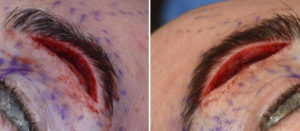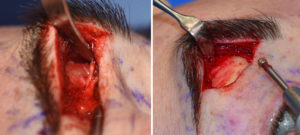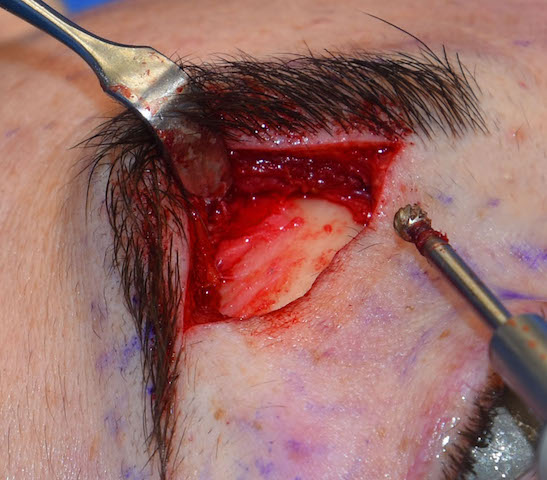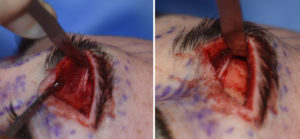Brow bone reduction for prominent supraorbital ridges is done in both men and women. The standard approach is from a scalp access whether that is done from a coronal or frontal hairline incision. By exposing the entire forehead and brow bones through forehead flap turn down, burring or bone flap reduction techniques can be used.
While for most women the consideration of a scalp incision is not usually an operation limiting consideration, for some men it may be. Men with very short hair, thinning hair or shaved heads, a long scalp incision may be an aesthetic liability that is not the forehead shape change that brow bone reduction achieves. In some men with pre-existing horizontal forehead wrinkles I have used it for a mid-forehead incisional approach to the brow bones and it has not proven limiting for even a bone flap technique.


It may be possible that the bone flap technique may be able to be done through the infra brow approach but I have yet to do so.
Dr. Barry Eppley
Indianapolis, Indiana




